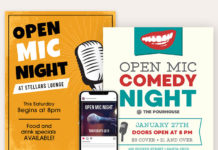When the Apple Watch lands on its first consumer wrist this month, the world will have taken another step towards a self-contained future of multimedia, multi-platform operations being available to us at the flick of our fingers. The current generation of tech-savvy tipplers who frequent your bar no longer ingest information or entertainment one channel at a time; sounds and sights, touch and taste, it’s all blending together.
Bar owners need to be ready for this sea change. Your vinyl platters spinning in the corner jukebox won’t cut it; your silent TV showing the same sports highlights over and over again won’t appeal; your bartop video poker console won’t enthrall. The audio/visual entertainment “ecosystem” on-premise is becoming a place where you need to be all things to everyone, or be nothing at all.
“Today, jukeboxes are put in the bar by operators who have access to a lot of different products, whether they be pool tables or TVs or other devices,” says Mike Maas CEO of AMI Entertainment Network. “There’s no question that bar owners and managers should be pushing their operators to get them all of the available tools they have to keep customers longer, make them spend more, and make them come back — retain, return, and spend.”
The A/V Toolbox
Many of these tools, fortunately, are being designed as suites, with on-premise entertainment companies like AMI and TouchTunes creating integrated, networked, multi-channel media platforms that, while useful individually, become ideal when bundled together in nightlife environments.
“We feel there is a lot of value to engaging patrons beyond music,” says Marc Felsen, Senior Vice President, Corporate and Product Marketing at TouchTunes. “So we’re extending the music experience out from the jukebox and beyond music to social and other content-driven interactions people can have.”
TouchTunes as a company has for years been cultivating its multi-platform approach. Alongside its improving digital jukebox hardware (Virtuo, and now Playdium) and upgraded software for both (Open Stage II), a mobile phone app for accessing music and creating personal playlists—among other functions—has proven wildly successful and popular with on-premise accounts and their patrons (over 3.5 million downloads). After all, the first step toward truly reaching Millenials in your bar starts and ends with their ever-present smart phones.
“Our penetration with our mobile app continues to grow at a very steady pace,” says Felsen. “We have more and more locations where a significant percent of the music is being played through the mobile app, and our users are engaged. We want to provide them a way to interact with their music experience that’s relevant, and mobile gives us a more one-on-one connection with our customers, whereas with the jukebox is more of an anonymous relationship. The mobile app allows us to provide better recommendations to the user and it allows us to analyze what they’re doing and provide a better experience.”
With the jukebox and mobile app as a base, TouchTunes is now actively engaging consumers through other on-premise channels such as Attract TV, which helps bar owners bridge the gap between a customer looking at the jukebox and a customer staring up the TV. With an integrated system of devices and software, the jukebox/television experience merges and keeps patrons involved longer.

“The primary purpose of Attract TV is to create a messaging platform and an engagement platform for the consumers,” explains Felsen. “The components are first and foremost about music promotion. It integrates with the TouchTunes jukebox and will display what is now playing, what’s coming up, the popular music on that jukebox in that location, and it will even display who the mobile players are buying music and the top players in that location. So you add a lot of information about what’s going on and you extend the jukebox experience off of the jukebox screen onto the TV screen.”
Two Pieces of Glass
Addressing the multi-channel approach on-premise, especially with regard to mobile phones, music, and television, is also a priority for Maas and his team at AMI Entertainment. Along with its own state-of-the-art digital jukeboxes, the company has launched an interactive gaming platform called Tap TV. Both are accessible on mobile phones.
“We’re attempting to help our bars and restaurants succeed by focusing on two pieces of glass — the glass on the wall and the glass in patrons’ pockets,” says Maas. “The glass on the wall is TV and the glass in your pocket is smart phones, tablets, mobile. Everything we’ve been doing and everything we’re going to do is focused on a bringing those things together. And jukeboxes sit in the middle; they’re a launching point for us.”
Tuning in TVs
While upgrading its jukebox technology one year ago with a Music Video capability that allows bars to upsell patrons from a song to a video selection, it’s been two years since AMI re-launched Tap TV as a gaming platform with trivia and other options. Integrated into that product is the company’s Ad Manager technology, which allows bar owners, managers and staff to customize promotional messages for broadcast over any displays running Tap TV programming.
AMI’s Excite channel can run alongside trivia and poker options, featuring, as Maas puts it, “Bar TV the way it should be — no sounds, just interesting content.”
“Television, from an entertainment standpoint, is probably the most popular entertainment medium on the planet, but how it’s used in a bar is a little bit weird,” says A.J. Russo, Chief Creative Officer at AMI. “You can walk into any bar know exactly what’s on TV — ESPN, Fox News, or CNN. And with the volume down those are not exactly pinnacles of entertainment. So we’re trying to create all these channels to have a better way for businesses to use
all these screens that they’re investing big money in.”
Engaging the television gazer is a priority for TouchTunes as well. The Attract TV platform allows for powerful venue messaging opportunities, along with interactive content and social streaming on-screen for patrons who want to be involved with their experience on all levels.
“The social interaction component allows staff and consumers to post messages and pictures using their own Twitter and Instagram accounts,”
explains Felsen.
The future of on-premise entertainment is here. Depending on how you embrace it — and the ways your customers engage in their own lives — you can shape your venue experience.
“We want to connect all of our experiences, but not to the point of a walled garden,” says Maas. “The Apple view of the world is a walled garden, single experience, whereas a Microsoft or Google view is a little bit more standard-based, open environment. We’re sort of in the middle. We certainly have done
and want to do things that make our products work together seamlessly. That said, if there is a location running a different music solution, it doesn’t mean they can’t get a lot of value out of Tap TV.
Each one of our product classes or categories can stand alone and be of high value in someone’s bar.”








